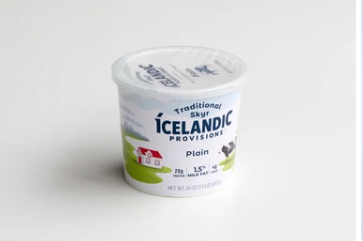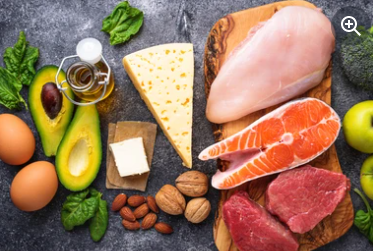If you’re an endurance cyclist, you’ve probably heard about carb loading. If you’re going on a long ride, it’s important to fuel properly. Being an ultra cyclist or endurance rider myself carb loading is vital to perform. But what is it? And how does it help your performance? Carb loading can be a helpful way to keep your energy up for long-distance rides. So I am happy to guide you through the ins and outs of carb loading based on my personal experience upon completing various gan fondos, endurance races and ultra cycling challenges.

What is carb loading?
Let me start with a short definition of carb loading. When you spend hours cycling, you burn a lot of carbohydrates. You need to replace these glycogen stores so that your muscles can keep working for the full endurance race distance.
Carb loading means consuming a lot of carbohydrates in the days leading up to the ultra event, in order to increase glycogen levels in your body and improve performance. The idea behind carb loading is that if you eat more than usual before an endurance cycling event, then store more carbohydrate as glycogen in your muscles and liver—and not as fat—that will provide energy while racing or training.
The amount of carbs required varies greatly depending on how active (or inactive) each person’s lifestyle is: someone who works out regularly might be able to get away with eating 200 grams per day; others may need 300 grams or more each day for five days leading up to their event.
Carb loading comes into play at 90+ minutes trainings
Carb loading is not necessary if you’re doing a short endurance event. A good example of this is my 90 minute sweet spot training which I do several times a week. Even though my legs feel like they are going to fall off at the end of it, I don’t technically need to carb load before starting out on my ride. If I go for my long sweet spot training of around 140 minutes I do load some carbohydrates before my ride.
Carb loading is also unnecessary if you’re doing an endurance cycling event that lasts less than 90 minutes. Don’t worry about carb loading beforehand—it’s not needed! However, if your training plan involves exercising for more than 90 minutes, like with real multi-hour endurance trainings of 3+ hours, then yes: You should definitely be carb loading before your workout starts.
Carb-loading is a method of eating more carbohydrates than usual before an endurance event. The goal of carb-loading is to increase your muscle glycogen stores and improve your endurance performance during the event. After about 90 minutes of exercise, the body can’t take in nutrients fast enough to replace those it’s burned through. Carbohydrates are the best way to replace those nutrients because they keep your muscles fueled for longer than fat or protein.
Why are carbohydrates the preferred nutrition before your endurance ride?
Simple, Carbohydrates are easier to digest than fat or protein. Carbohydrates are the most important fuel source for your body. That’s because they are digested quickly, providing you with a quick source of energy. They also provide fiber, which is an essential part of digestion and regularity (it helps keep things moving through your system). Carbohydrates can be found in all sorts of food: fruits, vegetables, grains and legumes.
This doesn’t mean that proteins for example are not important when doing endurance rides and endurance training. It’s important to eat enough protein to prevent loss of muscle during extended exercise. Protein is one of the three macronutrients and can be found in many foods. It’s important to eat enough protein because it helps repair cells, build lean muscle mass, and maintain that muscle mass.
Protein doesn’t just help improve your body’s ability to use fat as fuel—it also provides amino acids (the building blocks of proteins) that are critical for tissue repair and growth. The more intense an exercise regimen is, the greater your need for dietary protein becomes.
Personal experience and tips:
- Since I am training 6 days per week, including core and strength, training proteins are a crucial part of my diet. If you plan to dive into endurance cycling or long distance events and races, you will spent many hours on your bike each week. Make sure you eat enough proteins to build and repair your muscles.
- Before I go to bed I eat 200 grams of Skyr. Skyr is a thick & creamy Icelandic yogurt; low on fat but with a high protein content and a wide range of vitamins and minerals.

The common mistake of not eating before an event or race
Many athletes lose weight before or during a long endurance event because they’re not eating enough while they’re exercising or preparing for the event. One of the most common mistakes that athletes make when preparing for an endurance event is not eating enough calories. Athletes who are carb loading will eat plenty of carbohydrates in the days leading up to their event, and during it as well. The reason endurance cyclists sometimes lower their calorie intake the days before the event is in fact to intentionally lose weight. They believe losing weight will make them faster. A truth which might apply to short distance events but for sure not to endurance cycling events and races.
You should increase your caloric intake by about 30 percent in the week before your race, which means eating more foods high in carbohydrates like pasta, potatoes, bread and rice. You can also add extra protein to help you build muscle while repairing damaged tissues. Carbohydrate-rich foods like bananas, oatmeal and pasta will provide both calories and needed fuel as you ride through long distances without stopping very much at all (or at least not for more than a few minutes).
How to do carb loading the days before an endurance cycling race or event?
So how do you replenish what you lose? Eating between 200 and 300 grams of carbs per day for five to seven days before the race should be enough. When it comes to loading up on carbs during this time period, consistency is key: eat a lot every day and make sure that all those carbs come from healthy sources such as fruits, vegetables, whole grains (like quinoa), legumes (like black beans) and low-fat dairy products like milk or yogurt.
The American Council on Exercise recommends that athletes eat 200 grams–300 grams (0–0) per day for about 5–7 days before the race, which translates into about 1 gram per kilogram body weight daily (1). That means if you weigh 140 pounds (63 kilograms), then you’d need between 280 and 420 grams per day depending on how much exercise you’re doing at the time!
What food to eat during your carb loading days before the endurance cycling event?
Carb loading is not just about pasta, and it’s not just for athletes. It is about eating the right amount of carbs at the right time in order to give your body the energy it needs for an athletic event.

Pasta isn’t necessary for carb loading, nor is it always the best choice. Carb sources come in all shapes and sizes: pasta, rice, breads and cereals like oatmeal and quinoa (which also contain protein), potatoes (for those who are gluten sensitive), fruit (apples or bananas are usually recommended over other fruits due to their high sugar content) vegetables like carrots or broccoli with cheese sauce on top—any combination of these foods will work! What matters most is that you eat them with some kind of fat source—such as avocado slices or olive oil drizzled over your pasta dish—and consume them in moderation so that they don’t cause weight gain beyond what you want during this period of increased caloric intake.
Personal experience and tips:
- Although I do eat many proteins until two days before the race, I lower the amount the day before the race. Many endurance cyclists suffer from stomach issues if they drink or eat too much milk, yoghurt and other milk related nutrition the day before the event.
- Another tip, if you have diabetes or hypoglycemia (low blood sugar), then you should consult your doctor before beginning any type of diet plan.
- Avoid fiber rich food the last 2 days before your endurance ride. Especially when the endurance ride contains a lot of climbing. Fiber rich food will absorb water like a sponge and will lead to useless weight gains up to 1 kilogram.
- I also add some beetroot juice to my diet the days before the endurance cycling race or event.
- Avoid refined sugars in cookies, soda, sweets,…

Stay hydrated before and during your endurance ride
Carb loading is a strategic process that takes place over several days. But next to carb loading don’t forget to water load your body. Indeed, hydration plays a vital role too. Increase your water load the day before the endurance event.
On race day itself, you’ll want to stay hydrated by drinking plenty of water or sports drinks throughout the morning and early afternoon (you can also use some light exercise as an excuse for drinking). Your urine should be pale yellow throughout this time period — if it’s dark yellow or clear, then you’re probably not drinking enough fluids! As the big moment approaches, increase your fluid intake even more. Drink about 1 ounce (30 milliliters) of fluid every 10 minutes until just before starting out on the course itself .

Conclusion Carb Loading for Endurance Cycling Events or Races
I hope my carb load guide has helped you learn more about carb loading. And about how it can help you improve your performance in endurance cycling events. I know it can be confusing at first, but if you follow the advice outlined here, I promise it will work! Do keep in mind that food and the way we digest and experience it differs from one person to another. Test your food and carbohydrate intake during your training period so you know what is best for you when the event is coming closer.
If you want more advice or if you have questions about nutrition before and during long distance endurance cycling events, don’t hesitate to contact me. Sharing is caring!
Read more about some of my personal endurance challenges and races:

